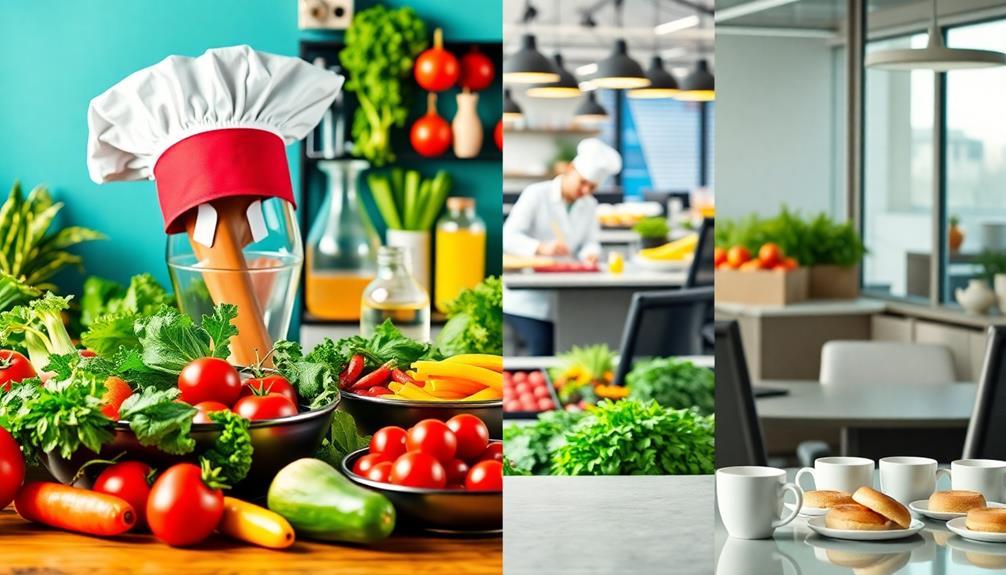The furniture market is currently undergoing a rapid transformation influenced largely by millennials. If you are in search of chic, affordable, and customizable furniture that can be easily adapted to your changing tastes, you are in luck. The availability of rental options allows you to refresh your living space without the hefty price tag of buying new furniture. Quick delivery and the use of innovative materials make it convenient to stay on top of the latest trends. Many brands are now focusing on offering a balance between quality and affordability, ensuring that you get the most value for your budget. Interested in learning more about how these changes are affecting your furniture choices? There is a lot to discover about this dynamic shift. Millennials are not just driving the fast fashion revolution in the furniture market, but they are also in search of efficient workspace setups that are both practical and stylish. The demand for adaptable office furniture that can cater to diverse work styles and environments is increasing. This has led to a greater emphasis on ergonomic design and space-saving solutions to create the perfect home office or collaborative workspace. This exciting evolution in the furniture market is simplifying the process of creating a personalized and efficient workspace setup that suits your specific needs.
Key Takeaways
- Millennials' preference for affordable, trend-driven, and customizable furniture is driving a fast fashion revolution in the furniture market.
- The rise of fast delivery and on-demand customization allows consumers to receive furniture within days, similar to fast fashion clothing.
- Innovations in supply chains enable brands to balance quality and affordability, essential for competing in the fast-paced furniture market.
- Furniture rental services are gaining popularity as they offer flexibility to adapt to changing trends without the commitment of ownership.
Millennials Driving Market Changes

Millennials are reshaping the furniture market by prioritizing affordable, trend-driven options that reflect their desire for personalized and flexible living spaces.
With about 25% of the U.S. population and over $200 billion in annual buying power, you're a significant force in this industry.
Instead of investing in permanent pieces, you often seek rental options that allow for frequent updates and adaptability.
Your preference for unique, customizable products pushes manufacturers to innovate and offer designs that resonate with your lifestyle.
This shift emphasizes experiences over ownership, leading to a rise in furniture rental services.
As a result, companies are adapting quickly, recognizing that appealing to your values means creating pieces that aren't just functional but also stylish and reflective of your identity.
The Rise of Fast Delivery
As the demand for personalized and adaptable living spaces grows, so does the importance of fast delivery in the furniture market. You want your new furniture quickly, and companies are stepping up to meet that need.
Rapid delivery isn't just about speed; it's about enhancing your shopping experience. Here are some key benefits:
- Custom furniture can be delivered in as little as six days.
- On-demand fabric options utilize 3D imaging and digital printing.
- Virtual design assistance helps you visualize your space.
- Quick delivery caters to your desire for immediacy.
With these efficient options, you'll transform your space in no time, keeping up with trends that matter to you.
Balancing Quality and Affordability

Maneuvering the fine line between quality and affordability is essential for modern consumers seeking stylish yet durable furniture. You want pieces that not only look good but also stand the test of time.
Luckily, innovations in supply chains are helping brands reduce costs without compromising on quality. Many companies are now offering furniture made with high-quality materials at accessible prices.
For example, brands like Furlenco focus on refurbishable solid wood designs that can endure years of use.
As you shop, keep an eye out for sustainability practices, as consumers increasingly value durability and environmental responsibility.
Trendy Accessorizing Strategies
Updating your home's aesthetics doesn't have to break the bank; trendy accessories offer a simple and cost-effective way to refresh any space. By incorporating a few stylish items, you can transform your environment without the commitment of new furniture.
Here are some accessorizing strategies to contemplate:
- Throw pillows: Add color and texture to your sofas or chairs.
- Wall art: Change your decor's vibe with framed prints or canvases.
- Decorative lamps: Enhance lighting while making a statement.
- Rugs: Define spaces and add warmth to any room.
With these strategies, you can easily stay on-trend while giving your home a fresh look.
Advantages of Furniture Rental

Renting furniture offers you the flexibility to adapt your living space to changing styles and needs without the commitment of permanent purchases. You can choose short or long-term leases, which means you can switch out pieces as trends evolve or your preferences shift.
Companies like CORT Furniture Rental provide quick delivery and setup, often within 48 hours, ensuring you won't be waiting long to enjoy your new look. Plus, renting gives you access to high-quality, trendy furniture without the financial burden of buying.
You can create a stylish environment that reflects your personality while easily updating it as needed. This approach not only saves money but also allows you to embrace your evolving taste effortlessly.
Conclusion
As you explore the fast fashion revolution in furniture, remember that 75% of millennials prioritize affordability and style when shopping. So, it’s no surprise that fast furniture is becoming increasingly popular among this demographic. With its affordable price points and trendy designs, fast furniture can easily transform your small bedroom into a stylish and functional space. Whether you’re on a tight budget or simply want to keep up with the latest decor trends, fast furniture offers plenty of options to help you achieve the look you want without breaking the bank.
This shift means you can find trendy pieces without stretching your budget.
Embrace the flexibility of customizable options and rental services, allowing you to refresh your space effortlessly.
With sustainability and innovative designs at the forefront, you're not just making a purchase; you're making a statement about your lifestyle and values.
Immerse yourself and transform your home today!









